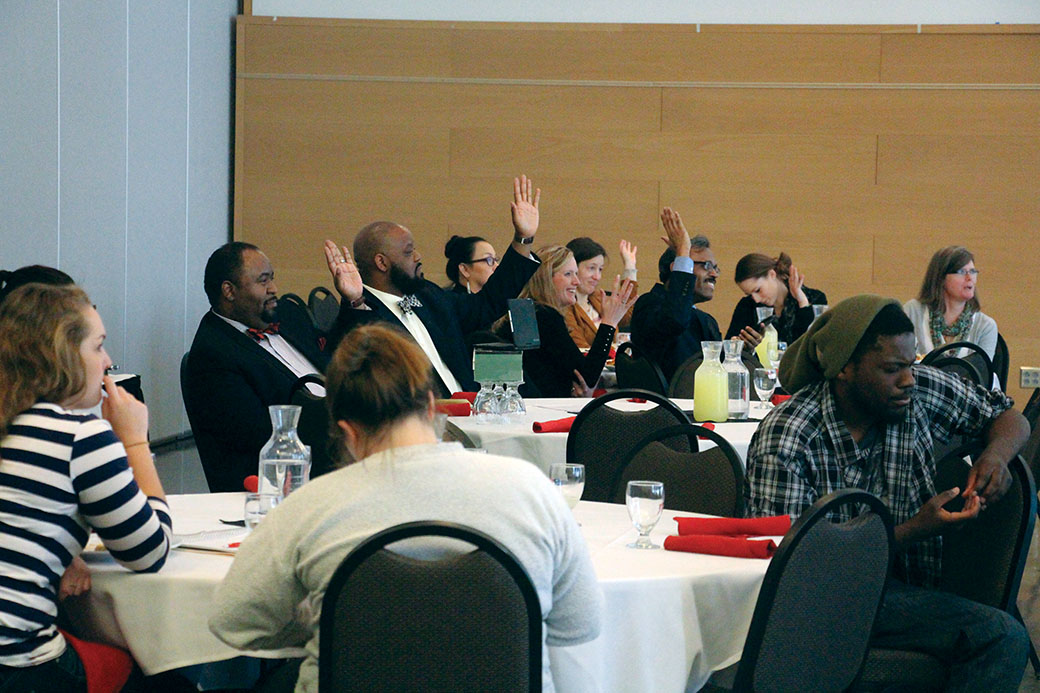
Sixth annual Diversity Symposium held in MUC
About 30 members of the USD community came to the Muenster University Center ballroom Monday for the sixth annual diversity symposium, held by the office of diversity.
The event’s keynote address was delivered by Antoinette D. Carroll, founder and CEO of Creative Reaction Lab, a “civic engagement and design social enterprise building healthier and more inclusive cities,” according to materials handed out during the event.
In her address, Carroll described her company and how she works to promote social change in her community. Too often, she said, people recognize the potential for making a difference but have a hard time becoming a change-maker.
“In reality, we know things need to be changed, and yet we don’t really see the impact of what we’re doing now,” she said. “If you’re challenging the status quo, you are changing the world. The question you have to ask yourself is, ‘Are you changing it to a world you want it to become?’”
Carroll highlighted the various ways that designers can work, sometimes invisibly, to change their world. After working for a time in the advertising and design field, she wondered how she could use her skills for a greater purpose.
“So I started to ask myself, how do I design diversity, and what does that look like?” she said.
Carroll has personally overseen various creative projects highlighting social justice issues within communities, including one in which people wrote messages to “their oppressors.”
She treats her less successful ventures as learning opportunities, she said.
“I honestly call everything I do a failure, and I’m OK with that,” she said. “Because, to me, failure is an opportunity to assess, and really start to look at, ‘How will I make this better?’”
Carroll also described her creative social justice work in the aftermath of Michael Brown’s death in Fergus0n, MO in 2014. She said while the voices of several groups were widely heard in those tumultuous days, there was one group not so many people listened to – artists.
“The reality is, artists and designers, most of the time, are excluded from these conversations,” Carroll said. “We love art, but we can’t really put our finger on the value of art.”
Carroll launched a 24-hour-long event where designers and artists could come up with ideas and brainstorm on some of the issues within the community, and creative ways to stimulate the conversation. One of these ideas was “Cards Against Brutality,” an educational tool designed to be used in high schools and colleges to bring awareness to social justice issues.
After her presentation, there was a question-and-answer session and workshops that further explored some of the themes discussed in her lecture.
Edrick Louidor, a junior liberal arts major, said he had a question he would’ve liked to have asked Carroll.
“I was going to ask, what role did designers play in the hands-up initiative for Black Lives Matter?” Louidor said.
Shamly Mackey, a senior majoring in computer science and a CDC worker, said he liked Carroll’s presentation.
“Overall I thought the speech was great, she definitely had a different perspective on how a designer could act,” Mackey said.


